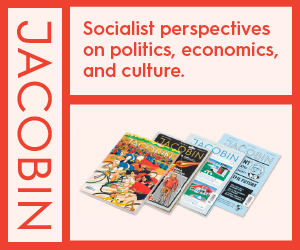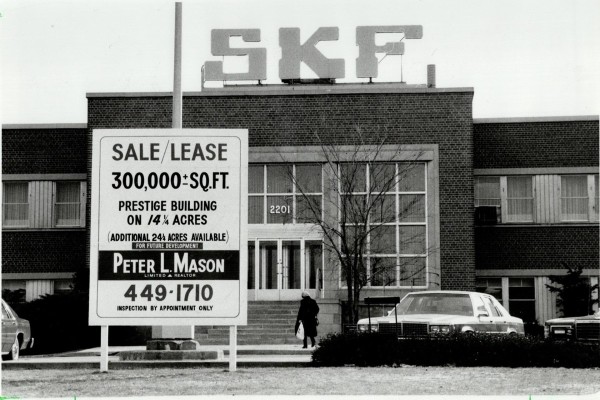Canadian Labour
Learning to Think Big Again
The Canadian labour movement is and has for some time been at an impasse that it shares with labour movements around the world. The problem is not an absence of struggles; localized struggles, some quite creative, are an everyday event. Yet without a larger vision and strategic orientation to counter the aggressiveness of corporations and the state, such struggles cannot help but be limited, and the demoralization and fatalism already evident threatens to spread.
The Cost of Lowered Expectations
The defeats of the past years go beyond specific losses – as painful and important as those have been. Rather, their measure lies in the lowering of expectations. The promises made earlier to promote neoliberalism – breaking inflation would bring employment security, free trade would strengthen the base for social programs, greater inequalities were essential incentives towards eventually achieving a higher standard of living for all – have all been exposed. Yet where is the impatience, frustration and anger that we also suggested would correspondingly resurface?
It may be true that some trade-union leaders, comfortable with the lowering of expectations, are part of the problem. But leaving it there ignores the depth of what we are really up against. The collapse of expectations is directly linked both to the weakness of the larger movements, from the socialist Left to the social-justice movements, and to neoliberalism’s success in not just rolling back gains, but affecting the ideology of the working class and its forms of struggle.
In the absence of collective power and support, it is not surprising that people turn to individualized solutions, and neoliberal structures have been there to accommodate, if not lead, that tendency: Your son’s or daughter’s tuition is rising? No point in going to another ineffective rally; put in more overtime instead. Family income falling short? The banks will help out. Tax breaks? Sure – if programs are being cut anyways, then why keep paying at the old level? Canada Pension Plan under attack? We’ll have to find a way to put some money into a private account and maybe make some gains from the stock market.
The catch, of course, is that this particular response affects the development of the collective capacities that go with collective struggles. Shifting from picket lines, street mobilization and oppositional ideologies to such individualized responses further fragments the class, reshapes consciousness and makes the prospect of future change even harder.
The first step in overcoming this impasse is to acknowledge its existence honestly, rather than obscure it in the name of some well-meaning but futile concern with maintaining morale. The second is in being equally honest about how radical any effective response must be in today’s context. The Thatcherite theme that “there is no alternative” is true in that there is no alternative unless we’re prepared to challenge the logic of capitalism.
Unless we think big, we are increasingly no longer even able to win small. This notion can itself be intimidating, but it is a truth that must inform everything we do. Calling for the extension of unionization to the presently unorganized is, of course, welcome, but it won’t lead to the necessary level of commitment and creativity (and further development after any successful unionization) unless “organizing” comes to be seen as more than growing a particular union, but as part of building the working class.
Collective bargaining will continue to be limited by competitive and fiscal pressures unless we simultaneously develop strategies that limit corporate and government restructuring – which in turn necessitates not only addressing “globalization,” but more specifically Canada’s relationship to the American empire. Tactics focusing on economic interests are important, of course, but unless they are integrated into a strategy that prioritizes a cultural change in how we see ourselves, others and our ultimate goals, the pressures of accommodation to the status quo will remain overwhelming.
Transforming Unions From Within
More broadly, reinventing the potential of the labour movement means viewing workers as more than just sellers of labour, but as human beings with capacities that have been robbed or wasted. It means unions themselves being the locale of the most exciting forums of an alternative kind of democracy and workers recapturing control over their hours of work as a precondition for having the time to develop their capacities and participate in community and political life. It means unions seeing themselves as centres of working-class life, and seeing “history” as a reminder of how an earlier working class – confronted with historical challenges at least as difficult as those we now face – took risks and discovered new ways to do what needed to be done.
This is not a call for revolution tomorrow, but to start doing today what can increase options and possibilities tomorrow. Above all, it means evaluating all our strategies and programs not just from the obvious importance of the demands themselves, but from the perspective of what they contribute to building the kind of understanding, confidence, solidarity and organizational capacities inside and outside the workplace that can one day actually change society.
The old Left overstated the spontaneous capacity of the working class to act as the social agent of social change. Yet its focus on the working class contained two abiding truths: if the working class lacks a truly independent vision, it will be vulnerable to shifts like neoliberalism; and without a working class in motion, various kinds of resistance may still emerge, but they will not bring about a radical transformation of society. Such a transformation requires a virtual revolution inside unions themselves, and will itself depend on the contributions of socialists who are both inside and outside the labour movement. From that perspective, it’s worth concluding with the humble recognition that the impasse in labour today is part of a larger impasse in the socialist and other movements.
This article appeared in the May/June 2005 issue of Canadian Dimension .










